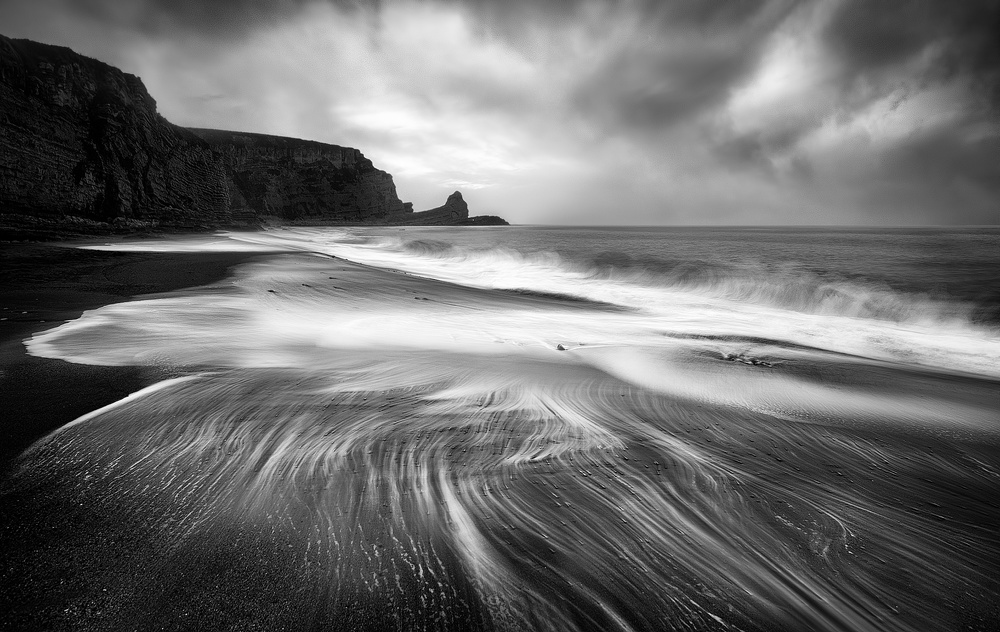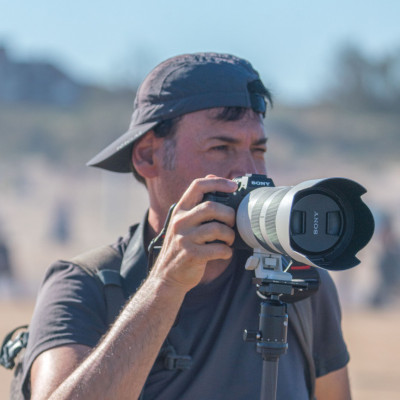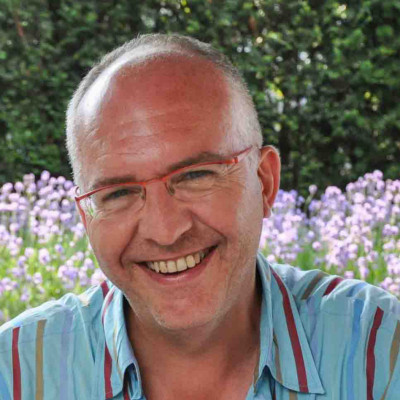SEARCH






|
|
|
|


by Yvette Depaepe
Published the 5th of March 2020
This amazing BW beauty taken by Fran Osuna stole my heart at first sight.
As no settings were mentioned, I was triggered to know more about this beautiful capture and asked Fran to tell us more about this splendid seascape.
Sharing with pleasure what Fran kindly answered to a few questions.

'Textures of the sea' by Fran Osuna
What was your first impression and what went through your mind in front of such an amazing view on a glorious seascape, showing such a striking fine textured foreground, Fran?
When I arrived at this beach I was surprised by the force with which the water moved, I had been there on other occasions and I always found calmer tides. The water seemed to ‘dance’ leaving impressive trails. Then I thought that I had to capture that movement, since the water gave a lot of play, the wakes that left the waves with their movement, were wonderful. The silks created by the water formed diagonal lines that could help orient the gaze towards the rocky peak as a vanishing point. The sky with those gray clouds was going to help me give volume to the image and I thought that a B&W could be attractive.
Did you know this location and was it your intention to shoot there?
This particular beach is Langre Beach, it is in Cantabria, Northern Spain, very close to Noja, a coastal town where I usually spend the summer, and because of its proximity I knew the place and had been several times. This time, I went in the month of October, my intention was to go when there were situations of live tides, which usually occur at that time, and the sea was incredible, the water rose and fell at high speed.
How many pictures did you take on this location that day?
That day I took about 70 photos of that place, with different frames and exhibitions and different moments of light, so then I could have where to choose.
Can you explain something more about the technique you used to obtain such an excellent photo? Please let us also know about the settings of your camera.
The first thing I did was to do tests, changing the camera parameters, I wanted to know the proper shooting speed, to capture the movement of the water as I wanted, for this I took about 10 photographs to get the correct parameters. Of course, I used the tripod well in the sand, to avoid as much as possible the movement of the camera, which can occur when the water hits the tripod. I had to use a 6-step nd filter to subtract light and get shot at a speed of 2 ”. Once the parameters with which I was going to work were defined, I took photographs, changing frames and playing with the movement of water. The final photo is taken when the water returned to the sea, it was then that more textures and detail were left on the sand.
I shot at f/8 because it is the sweet spot of my goal and in this case I didn't need more depth of field. The final parameters were as follows: Focal 22mm, iso 100, 2” firing speed, f/8 aperture.
Please tell us more about your workflow and processing once downloaded on your computer?
For the photo processing I use camera raw first, here I make the main adjustments: white balance, exposure, adjust lights and shadows, lens correction. Then I turn to Adobe ps and the first thing I like to do is adjust the perspective and correct the horizon if necessary.
To pass the image to b & W I use the Nik collection silver efex pro filter. I like to use this plugin as a starting point since it has many presets, and you can save time in processing. Later I am contrasting the image, for this I like to work with masks of luminosity, since it is a very powerful tool and gives a lot of play, it allows you to make subtle and complex selections. To contrast and clarify areas of the image, once the selections have been made, I use different layers, changing the blending mode and their opacity, for example, the multiply mode obscures the image a lot and the plot mode helps to clarify it, the modes soft light and overlay help contrast it. During processing I like to use the camera raw filter and return to it if necessary, for example, to reduce noise using luminance levels. Of course, throughout the processing, I am controlling the histogram so that overexposed and underexposed areas do not appear. To finish the image, I use the smoothing approach and apply it by zones.
Big thanks, dear Fran!
 | Write |
 | Fran Osuna PRO Thank you very much for your words. I also want to thank Yvette for giving me the opportunity to be part of this magazine |
 | Eddy Verloes PRO Interesting interview ! Congrats to both of you ! |
 | Yvette Depaepe CREW Thanks for sharing this interesting information about 'The textures of the sea'. Beautiful shot, dear Fran. Congratulations! |
 | Miro Susta CREW Interesting & educative interview, great photo example. Well done Yvette & Fran. |